Tiananmen Square is a sprawling expanse in the center of Beijing. It stands as a symbol of China’s rich history and vibrant culture. This “How to Visit Tiananmen Square – A Complete Guide” provides you with all you need to know for your trip to Tiananmen Square. It ensures a smooth and enjoyable visit.
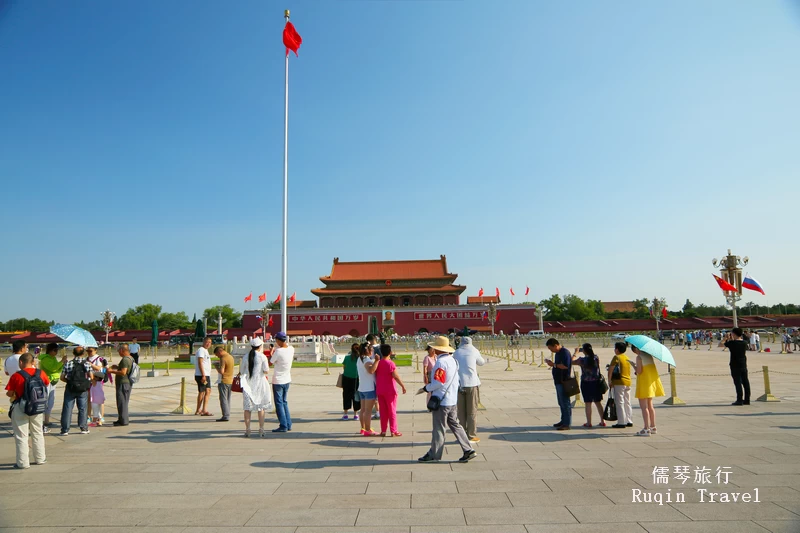
Here, visitors can explore several landmark sites: the imposing Tiananmen Tower, the solemn Monument to the People’s Heroes, the grand Great Hall of the People, and the poignant Chairman Mao Zedong Memorial Hall.
Additionally, witnessing the national flag-raising ceremony offers a uniquely stirring experience, captivating thousands of visitors daily. As a quintessential destination in Beijing, Tiananmen Square is an unmissable stop for anyone seeking to understand the heart and spirit of China.
1. Best Times to Visit Tiananmen Square
The best time to visit Tiananmen Square largely depends on Beijing’s seasonal weather and the flow of tourists. Generally, spring (April to June) and autumn (September to November) are ideal, offering mild temperatures and clear skies.
These seasons strike a perfect balance between comfort and the beauty of the surroundings, with spring’s blossoming flowers and autumn’s golden leaves enhancing the square’s majesty.
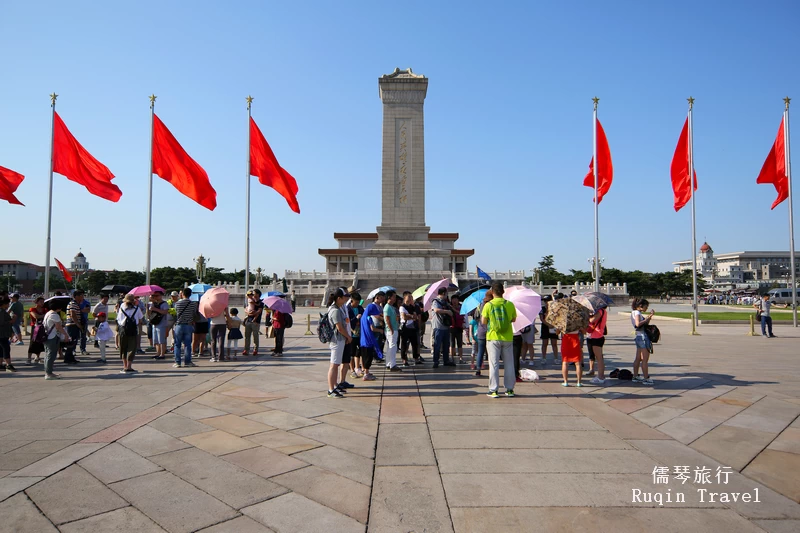
Summer (July to August) brings hot temperatures and a surge in tourist numbers, while winter (December to February) can be quite cold, though less crowded.
For a truly memorable experience, aim to visit during national holidays like National Day (October 1st) or during important events, but be prepared for larger crowds.
🚩Tiananmen Flag-Raising Ceremony – A Moment of National Pride
Start your day in Beijing with one of the most stirring sights in the capital — the flag-raising ceremony at Tiananmen Square. Held every morning at sunrise, this solemn event is performed by the honor guard of the People’s Liberation Army. As the national anthem plays and the red flag rises with the sun, you’ll feel the energy of history, pride, and patriotism all around you. Just be sure to arrive early — crowds gather well before dawn!
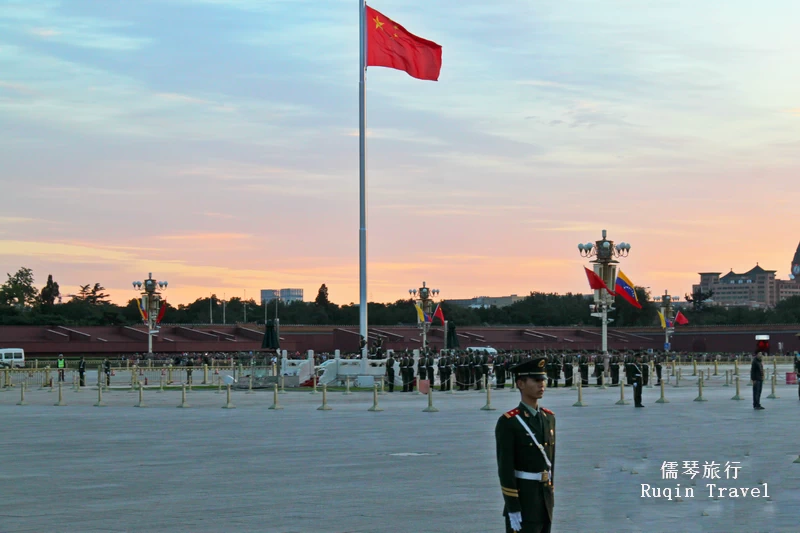
🌇 Flag-Lowering Ceremony – A Quiet, Powerful Closing
As the sun sets over Beijing, the flag-lowering ceremony at Tiananmen Square offers a peaceful and respectful end to the day. It mirrors the morning ceremony with the same military precision and ritual, but in a calmer, more reflective atmosphere. It’s a beautiful way to witness how tradition continues in modern China — a quiet but powerful moment that many travelers overlook.
2. How to Get to Tiananmen Square
Reaching Tiananmen Square is convenient with Beijing’s efficient public transport system. For subway users, two primary lines serve the area:
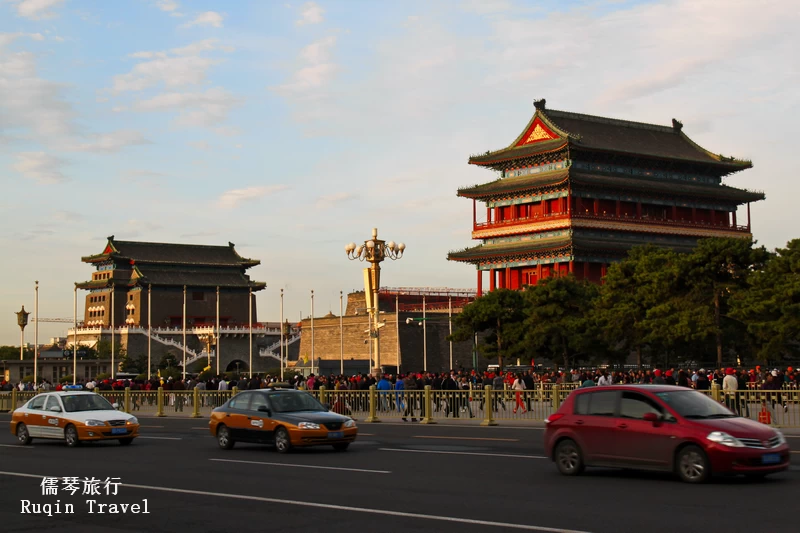
- Subway Line 1: Alight at either Tiananmen East or Tiananmen West stations. From here, the square is a short walk away, offering a glimpse of the city’s bustling streets.
- Subway Line 2: Exit at Qianmen Station using Exit A or B, then head north. This route passes through historic areas, adding to the sightseeing experience.
For those preferring buses, multiple routes lead directly to the square:
- Routes to West Tiananmen: Buses 1, 5, 52, and Sightseeing Lines 1 and 2.
- Routes to East Tiananmen: Buses 1, 2, 52, 82, 120, Sightseeing Lines 1 and 2.
- Routes to East Tiananmen Square: Buses 2, 5, 120, Sightseeing Lines 1 and 2.
- Routes to West Tiananmen Square: Buses 2, 120, Sightseeing Lines 1 and 2.
- Routes to Qianmen East Station: Buses 22, 82, 137, 599. From here, a short walk north leads to the square.
While navigating, consider using a Beijing transit app for real-time updates and route planning. Also, carrying a map or having one on your smartphone can be invaluable for first-time visitors.
2. Entrance and Reservation
Visiting Tiananmen Square itself is free, but accessing certain attractions like the Tiananmen Tower requires a fee of CNY 15. As of 2021, visitors must book their visit in advance, a policy that applies to both individuals and groups.
This measure aims to enhance visitor experience and maintain order, reflecting a broader trend in China’s tourism industry of advanced reservations, especially important in the context of COVID-19 prevention.
1) Tiananmen Square Entry Reservation
Reservations can be made for up to 1-7 days in advance through several channels:
- WeChat Mini-Programs: ‘Tiananmen Square Reservation Service’ and ‘Jingchengzhiyue’.
- Mobile Applications: ‘Beijing Tong’, ‘Beijing Daily’, and BRTV.
- Official Website: To book your entrance, please visit the ‘Tiananmen Square Reservation Service Section‘ on the Tiananmen Management Committee’s website here.
- Book the entry to Tiananmen Square through Viator Platform.
- Tiananmen Square Reservation Hotline: 0086 10 86409123
Note:
1) Each booking can include up to 7 people (4 adults and 3 children).
2) The reservation slots for Tiananmen are updated daily at 12:00 noon. So grab your tickets starting at noon daily.
In addition, you have the opportunity to visit Tiananmen Square on the same day without pre-booking if you have successfully reserved entry to any of the following attractions:
- Chairman Mao Memorial Hall
- National Museum of China
- The Forbidden City
- Zhongshan Park
- Beijing Workers’ Culture Palace
Whether in the morning, afternoon, or during the unique flag-lowering ceremony, you are welcome to wander around the square as long as these attractions are open.
For an added memorable experience, consider witnessing the flag-raising ceremony at Tiananmen Square. Please note, this requires a separate, advance booking specifically for the “flag-raising” time slot.
For those who find digital platforms challenging, such as the elderly or those without access to smart devices, assistance is available from friends, relatives, or on-site staff.
Visitors can choose from four time-slots: the flag-raising period (early morning), morning, afternoon, and the flag-lowering period (evening). While there is currently no cap on the number of visitors, the authorities may adjust this based on pandemic situations. Note that a reservation does not exempt one from security checks, which are mandatory for entry.
2) Chairman Mao Memorial Hall Entry Reservation
The Chairman Mao Memorial Hall, a solemn tribute to the founding leader of the People’s Republic of China, holds deep historical and cultural significance. To visit, advance reservations are required and must be made 1 to 6 days before your visit. You can book through the official website or trusted travel platforms.
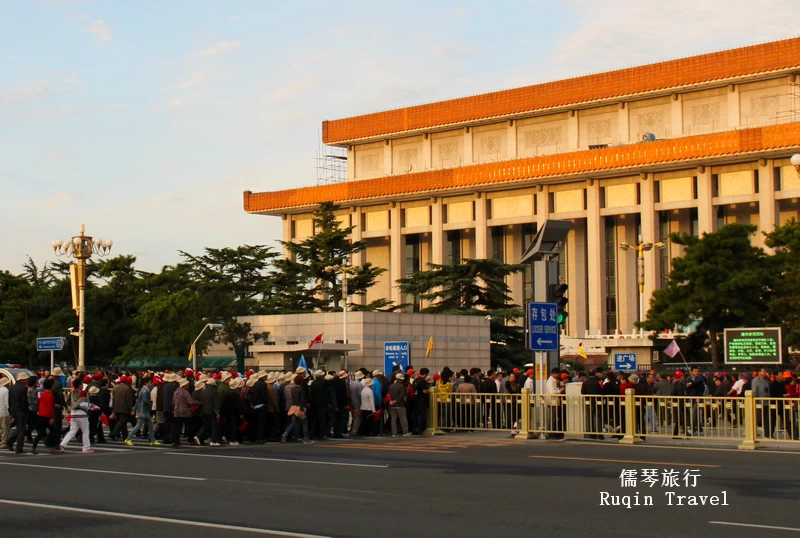
👉 For full details, see: [Chairman Mao Memorial Hall Tickets and Reservation]
Booking Details:
- On-site Booking: Not available
- Advance Booking Window: 1–6 days in advance
- Entrance Fee: Free
- Reservation Opening Time: Daily from 12:30 pm (Beijing Time). So start to grab your tickets at this time!
- Booking Platforms: Trip.com, WeChat, Alipay, and select third-party apps
- Official Site: 毛主席纪念堂 – Individual booking (mfu.com.cn)
- Reservation Holtline: 0086 10 55605013
Note:
1) Each booking can include up to 5 people
2) The reservation slots are updated daily at 12:30 pm. So grab your tickets starting at this time daily.
3) If you have successfully secured the entry to Chairman Mao Memorial Hall, you are able to enter Tiananmen Square without pre-booking ( except for morning-flag-raising ceremony).
Opening Hours:
Tuesday to Sunday, 8:00 AM – 12:00 PM
(Hours may vary on national holidays or special memorial days. Closed on Mondays.)
3) Great Hall of the People Entry Reservation
The Great Hall of the People is a landmark of modern Chinese architecture and serves as the venue for China’s most important legislative and ceremonial events. Visitors must book tickets 1 to 3 days in advance through approved online platforms.
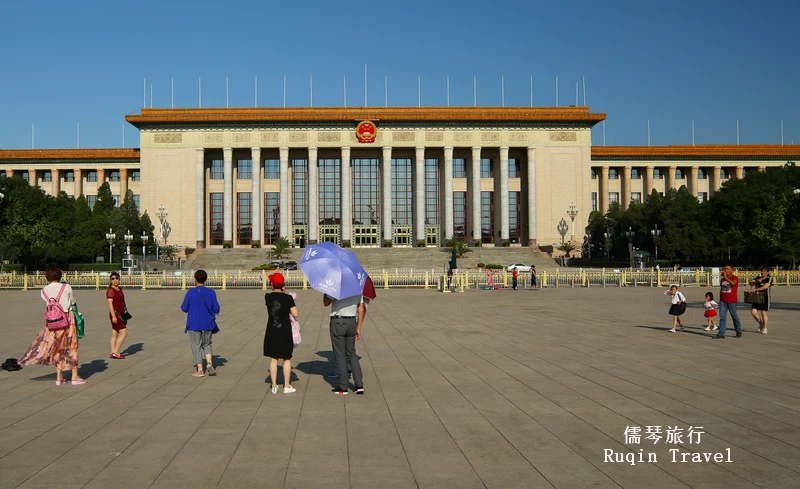
To plan your visit, make a reservation via the WeChat mini program. Please note that on-site ticket sales are not available, and same-day and group bookings are not accepted.
Ticket Information:
- Adults: ¥30
- Students: ¥15 (with valid student ID)
- Free entry: Children under 18 and seniors aged 60 and above
- Reservation Hotline: 0086 10 83084776 (9:00 – 15:00)
Note: If you have successfully secured the entry to Great Hall of the People , you are able to enter Tiananmen Square without pre-booking ( except for morning-flag-raising ceremony).
Opening Hours:
Daily from 8:30 AM to 3:00 PM (last entry at 2:30 PM; the venue closes at 3:00 PM).
Please be aware that the hall may be temporarily closed during high-level diplomatic events. For the most accurate schedule, check on-site announcements or official platforms.
4) Tiananmen Tower Entry Reservation
Tiananmen Tower (Gate of Heavenly Peace), located at the northern end of Tiananmen Square, is a historic and iconic structure symbolizing China’s rich cultural and political heritage. Due to high visitor demand and limited on-site availability, advance reservations are required at least one day before your visit.
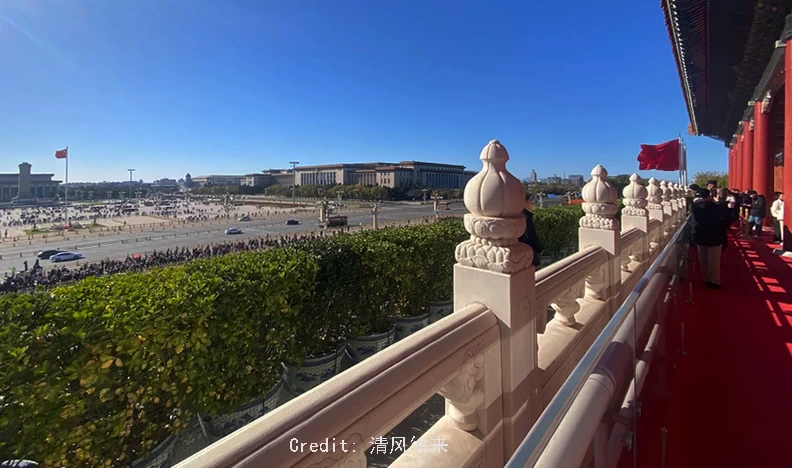
Ticket Booking Information:
- On-site Booking: Not available
- Advance Booking Window: 1–7 days in advance
- Entrance Fee: ¥15 per person
- Online Booking Opens: Daily from 5:00 PM
- Official Booking Platforms: WeChat Mini Program or [Tiananmen Tower Ticket Booking Website]
- Closed: Mondays
- Reservation Hotline: 0086 10 63095718
Note:
1) Visitors aged 60 and above can enter for free but must still make a reservation in advance.
2) If you have successfully secured the entry to Tiananmen Tower, you are able to enter Tiananmen Square without pre-booking ( except for morning-flag-raising ceremony).
Opening Hours:
8:30 AM – 5:00 PM (last entry at 4:30 PM)
Closed on Mondays.
5) Working People’s Cultural Palace Entry Reservation
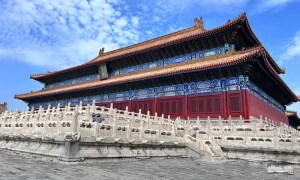
Once known as the Imperial Ancestral Temple (太庙 Tàimiào), the Working People’s Cultural Palace is a historic site located just southeast of the Forbidden City. Originally built as a sacred space for emperors to honor their ancestors, it was constructed alongside the Forbidden City itself.
In the 1920s, the site was opened to the public, and after 1949, it was officially designated as a cultural and recreational venue for workers — reflecting its current name.
Visitor Information:
- Admission Fee: ¥2 per person
- Opening Hours: 9:00 AM – 4:30 PM (Closed on Mondays)
- Advance Booking: Available via WeChat
- Address: East of Tian’anmen Gate, Dong Chang’an Avenue, Dongcheng District (东城区东长安街天安门东侧)
- Contact:0086 010-6511 6776
Note: If you have successfully secured the entry to the Working People’s Cultural Palace, you are able to enter Tiananmen Square without pre-booking ( except for morning-flag-raising ceremony).
This peaceful park-like setting is perfect for travelers interested in both imperial history and modern cultural life in Beijing.
6) National Museum of China Entry Reservation
As one of the largest and most comprehensive museums in the world, the National Museum of China offers a deep dive into the nation’s rich history and cultural heritage. Its vast collections span ancient artifacts to modern exhibitions, making it a must-visit for anyone interested in Chinese civilization.
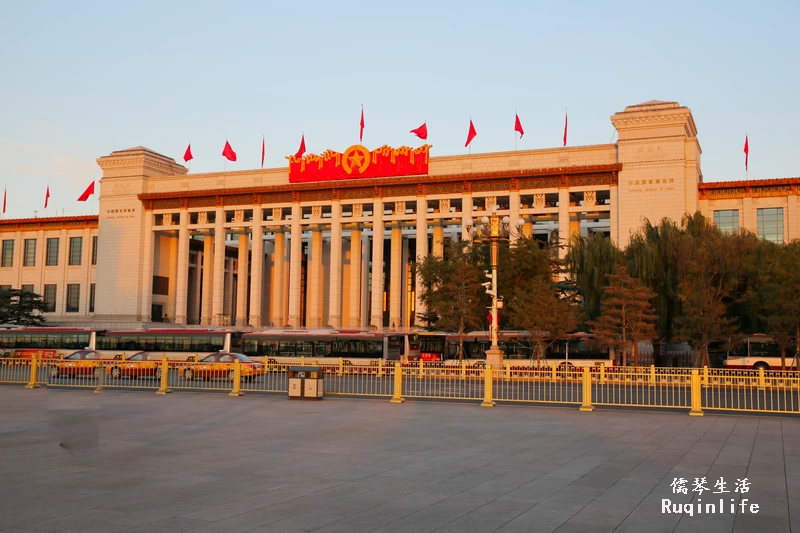
Due to high visitor volume, advance reservations are required and must be made 1 to 7 days before your visit.
Reservation Details:
- On-site Booking: Not available
- Advance Booking Period: 1–7 days in advance
- Admission: Free of charge
- Booking Opens: Daily from 5:00 PM
- Closed: Mondays (except public holidays)
- Reservation Platform: [Reserve Tickets for National Museum of China]
- Reservation Hotline: +86 10 6511 6400
Opening Hours:
Tuesday to Sunday, 9:00 AM – 5:00 PM (last entry at 4:00 PM)
📍 Note: If you have a confirmed reservation to visit the National Museum of China, you can access Tiananmen Square without a separate reservation, except during the flag-raising ceremony in the morning.
7) Zhengyangmen Arrow Tower Entry Reservation
Zhengyangmen Arrow Tower, perched at the southern tip of Tiananmen Square, is a striking landmark along Beijing’s historic central axis. Once a military stronghold and ceremonial gateway, it’s now a fascinating window into the city’s imperial past.
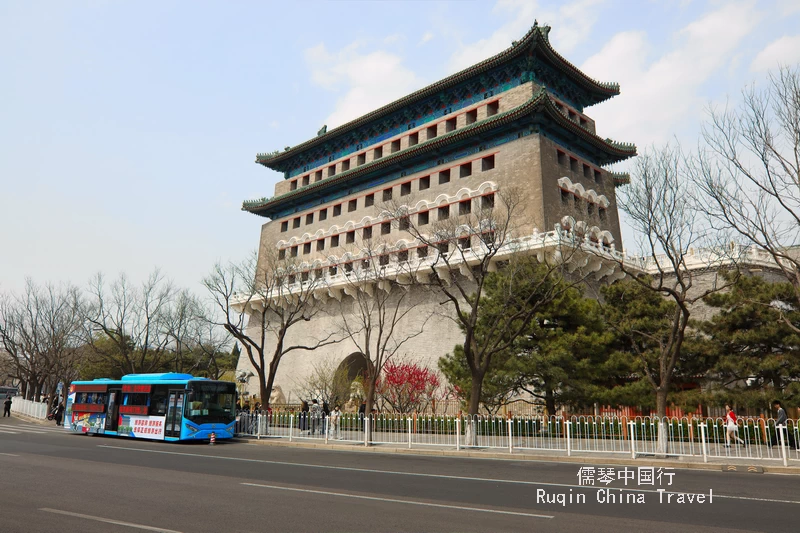
Built back in 1439 during the Ming Dynasty, this fortress-like structure is made of brick. The platform stands 12 meters tall, while the tower adds another 24 meters. It has four levels in total, with 94 arrow slits on three sides — once used to defend the capital.
Today, the tower is open to visitors. You can explore the ground level, the northern city wall platform, and all four exhibition floors.
- Floors 1 to 3 feature the special exhibit “Beijing Central Axis: A Masterpiece of China’s Ideal Capital.”
- The 4th floor showcases displays on traditional Chinese intangible heritage.
Want a deeper experience? Join one of the four guided tours offered daily.
🕘 Opening Hours:
- Tuesday to Sunday: 9:00 AM – 5:00 PM (last entry at 4:30 PM)
- Closed on Mondays (except public holidays)
📲 How to Book:
- Use the official WeChat account “北京中轴线遗产保护中心”
- Reservations open daily at 5:00 PM
- You must book 1–7 days in advance
- No same-day or on-site ticketing
- Each WeChat account can book for up to 5 people
🎟️ Admission:
Currently free during the trial period (as of March 24, 2025). Charges may apply later — stay updated via the official WeChat announcements.
📞 Need Help? Call: 010-63159185
3. What to See at Tiananmen Square at Night
While it is vibrant during the day, the square transforms into a tranquil and majestic space at night. The illuminated buildings and serene atmosphere create a magical experience.
If you’re visiting Beijing, exploring Tiananmen Square at night should be on your list. This guide will show you what to see and how to enjoy your evening visit.
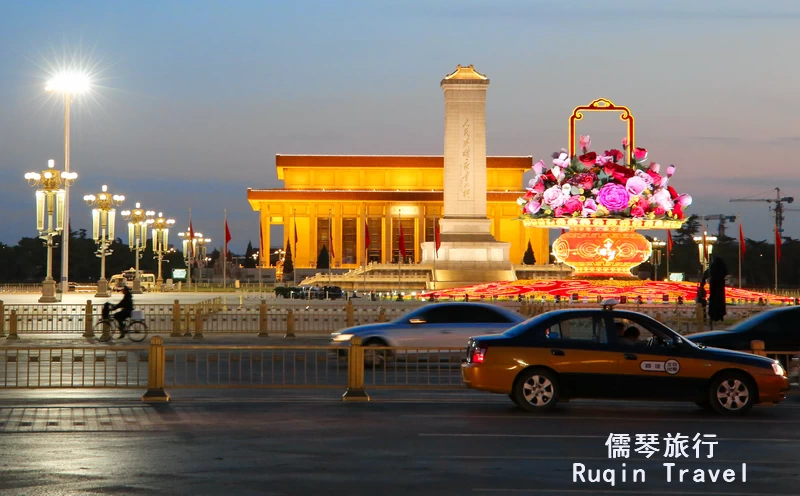
4. Nearby Attractions and City Walk
The area surrounding Tiananmen Square is rich with historical and cultural sites, each offering a unique glimpse into Beijing’s past and present:
- Forbidden City: Just north of Tiananmen Tower, the Forbidden City is an expansive palace complex that served as the imperial palace for centuries. Its stunning architecture and vast collection of artifacts make it a must-visit.
- China Railway Museum (Zheng Yang Gate Branch): Located southeast of the square, this museum showcases the evolution of China’s railway system through fascinating exhibits.
- Beijing Planning Exhibition Hall: Also to the southeast, this hall offers insights into Beijing’s development history and future urban planning, featuring detailed models and interactive displays.
- Dongjiaomin and Xijiaomin Lanes: These two traditional Hutongs near the square provide a glimpse into the old Beijing lifestyle, with their narrow lanes and historic buildings.
- Qianmen Street: South of the square, this popular shopping area is known for its ancient gate tower and bustling marketplace, offering a mix of traditional and modern shopping experiences.
- Lao She Teahouse: Southwest of the square, this cultural teahouse offers a Beijing-style experience, complete with performances and local teas.
- Dashilan Street: Dashilan Street (also known as Dashilar Street 大栅栏), located just on the west side of the famous Qianmen Street in Beijing, is one of the city’s most vibrant and historic commercial areas.
- Yangmeizhu Xiejie: Unlike the bustling commercial areas of the city, Yangmeizhu Xiejie provides a serene escape filled with history, culture, and local life.
- Sanlihe Park: Nestled in the heart of Beijing’s Dongcheng District, Sanlihe Park (三里河公园) is a peaceful oasis that offers a much-needed break from the fast-paced city life.
- Caochang Hutongs: Caochang Hutongs (草厂) stand out as a hidden gem, offering a glimpse of authentic old Beijing life.
🌟Beijing Central Axis Discovery Tour
Qianmen Street • Tiananmen Square • Forbidden City
Embark on an unforgettable day exploring Beijing’s storied Central Axis — a grand line of history that reveals the soul of the capital. This expertly curated tour blends imperial heritage with lively street scenes, taking you from traditional hutongs to majestic palaces.
Let our experienced local guide lead you through centuries of culture, architecture, and national pride on this immersive full-day experience.
👉 Book Your Beijing Central Axis Tour Now
✅ Tour Includes:
- Knowledgeable English-speaking guide
- Comfortable air-conditioned transportation
- All entrance tickets to listed attractions
More Beijing Travel Guides
Planning your Beijing tour? Our “Beijing Travel Guide“ section offers essential advice to help you navigate the city like a pro. From transportation tips and local customs to insider recommendations for hidden gems, these travel tips will ensure you have a smooth, enjoyable, and unforgettable experience in China’s vibrant capital. Let us guide you through the best practices for exploring Beijing with confidence!

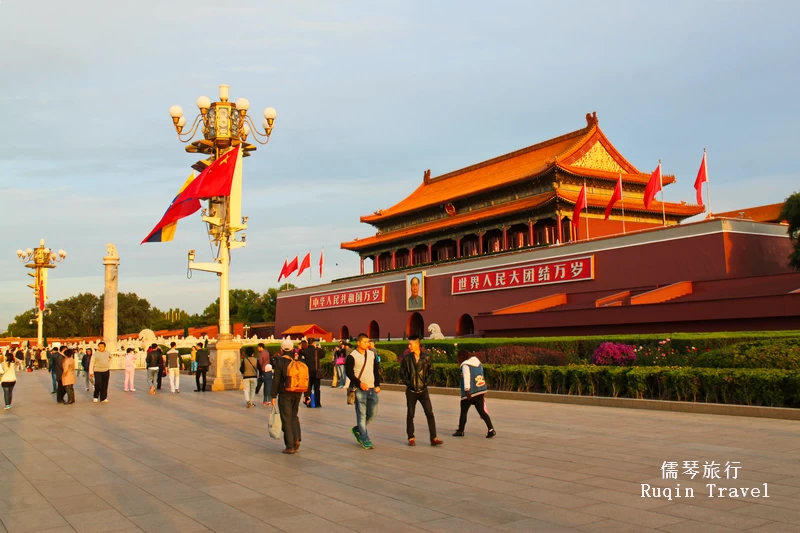
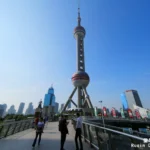
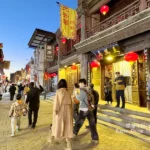
Hello!Most of the sites provided are always down and it’s impossible to book anything 🙁
Dear Ana,
Thanks for reaching out to Ruqin China Travel!
But which site is always down? Thanks for your feedback!
Best Regards,
Ruqin China Travel Team
Hello! I successfully booked afternoon tickets for the Forbidden City. I would like to know if it is still true that I can visit Tiananmen Square on the same day without a specific ticket for the square. Thank you!
Hi Catarina,
Thanks for reaching out—and great to hear you’ve booked your Forbidden City tickets for the afternoon!
Yes, it’s still true that with a valid same-day ticket to the Forbidden City, you can enter the central area of Tiananmen Square in the afternoon (or morning, depending on your ticket) without a separate reservation. So in your case, since you have an afternoon ticket, you’ll be able to access the square during that time without any issues.
Just a heads-up: if you’re planning to attend the flag-raising ceremony in the early morning, that does require a separate reservation, as the Forbidden City ticket doesn’t cover that time slot.
Also, it’s a good idea to download your Forbidden City ticket QR code in advance—just in case cell signal isn’t great when you need to scan it.
Enjoy your visit! Feel free to reach out if you need anything else.
Best,
Daniel
Ruqin China Travel
Hi! I am trying to see the availability for the next few days for the Chairman Mao Memorial Hall and the Great Hall of The People on WeChat miniprogram and it seems ALL days are already full in ALL time slots. Even for the 18th of April (Memorial Hall). Is this normal?
Hi Tito,
Thank you for your message!
I just checked the WeChat mini program myself and can confirm that the Chairman Mao Memorial Hall is fully booked through April 18. Tickets are released 6 days in advance, so it’s likely that reservations for the 18th were snapped up quickly as soon as they became available earlier today (April 12). Also, due to strong winds today in Beijing, the memorial hall was temporarily closed, which may have pushed more visitors to book future dates—making availability even tighter.
Here are a few possible reasons for the situation, and some suggestions:
High Demand: The memorial hall is one of China’s most important red tourism landmarks, and it often fills up quickly—even on regular weekdays—due to both tour groups and individual visitors.
Limited Booking Window: Tickets must be booked 1–6 days in advance. If you’re checking within that short window, it’s common to find all slots taken—especially for popular dates or morning times.
Weather-Related Closure: As mentioned, today’s strong wind warning led to a temporary closure. Some visitors may have rescheduled to later dates, making the system even busier.
Here are a few tips to improve your chances:
Try booking for a weekday and earlier time slot, avoiding weekends or any commemorative dates.
Keep refreshing the WeChat mini program—some people may cancel, and slots can open up suddenly.
If possible, look into group reservations—there may be limited availability still open through that route.
You can also call the official line at 010-55605013 or check their official announcements for updates.
As for the Great Hall of the People, availability tends to follow a similar pattern. That said, I just checked and noticed that there are still tickets for April 14—so you might want to grab those while they’re still available!
Lastly, you might also want to try booking Tiananmen Square through the third-party platform: Tiananmen Square Entry Reservation (Click & Book)
Let me know if you need help navigating the booking platform or anything else during your trip planning.
Warm regards,
Daniel
Ruqin China Travel
Hello, in the hotel they told us that for the Lama temple and temple oh Heaven there is no need to book in advance, tickets can be purchased in the same day. Is this information correct ?
Hi Angela,
It is correct. So,you don’t have to prebook tickets the following attractions such as Beihai Lake, the Summer Palace, the Temple of Heaven, or Jingshan Park. You can simply buy your tickets at the entrance when you arrive. It’s all very straightforward and convenient.
However, it’s recommended to reserve tickets in advance, especially during peak seasons and holidays. Pre-booking ensures not only guaranteed access but also allows you to bypass long queues, offering a more seamless and enjoyable experience.
For more information about tickets booking in Beijing, please check out How to Book tickets in Beijing.
Have a good time in Beijing!
Best Regards,
Daniel Li